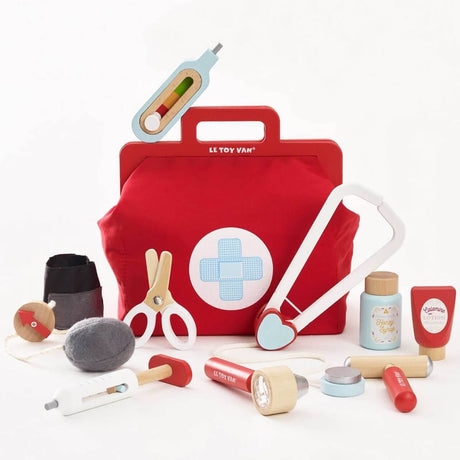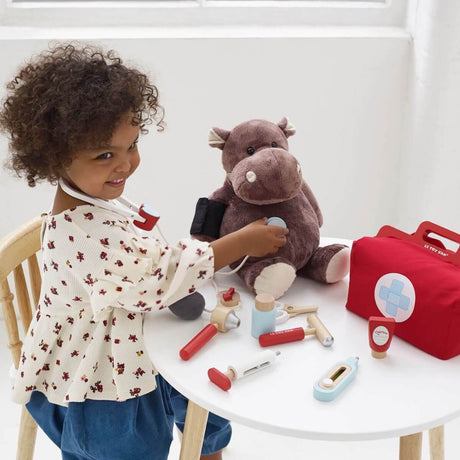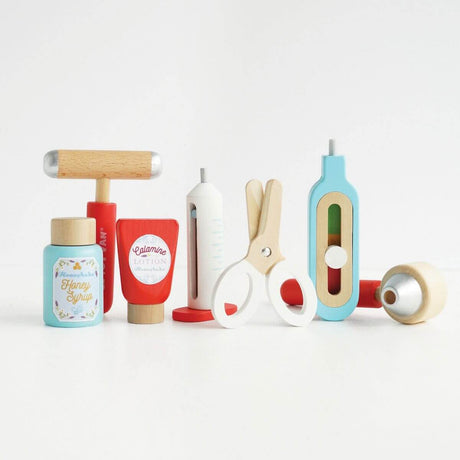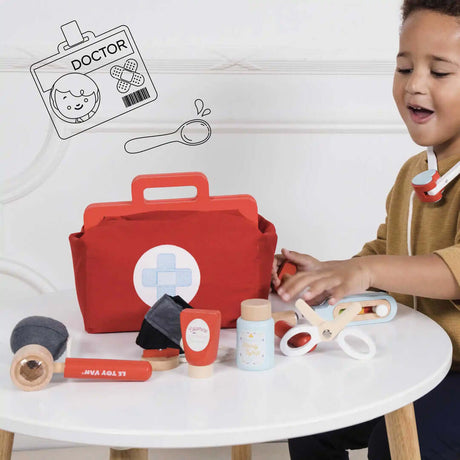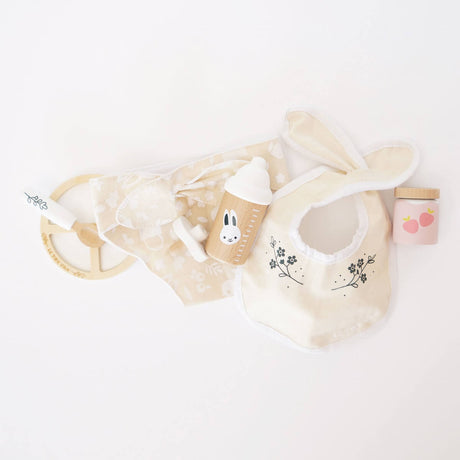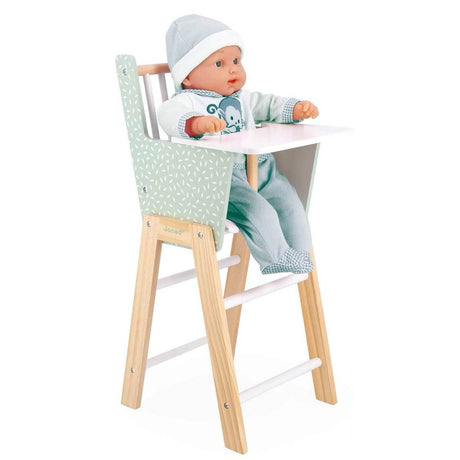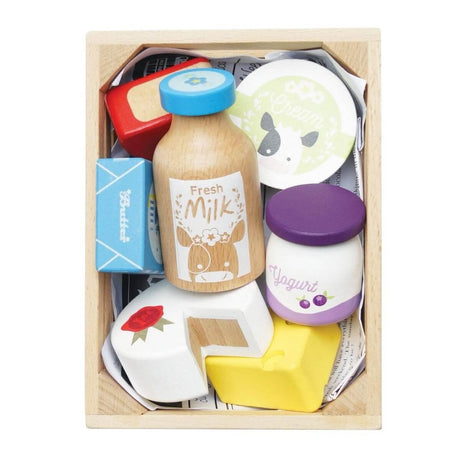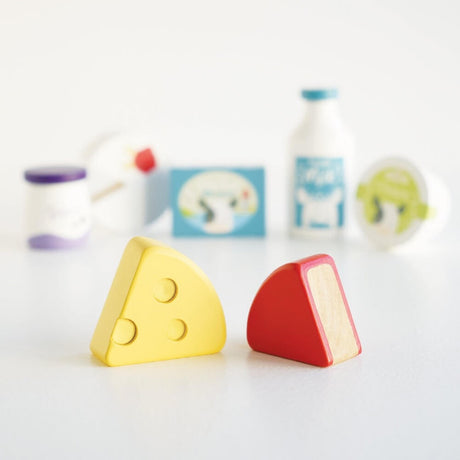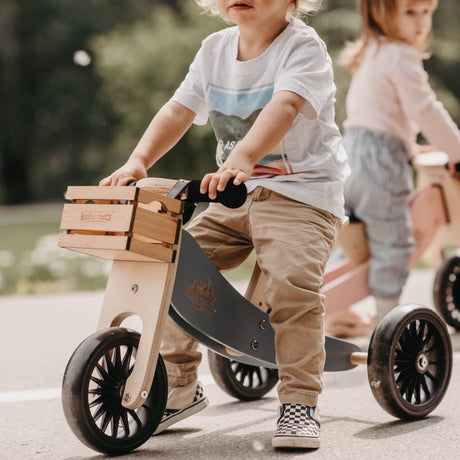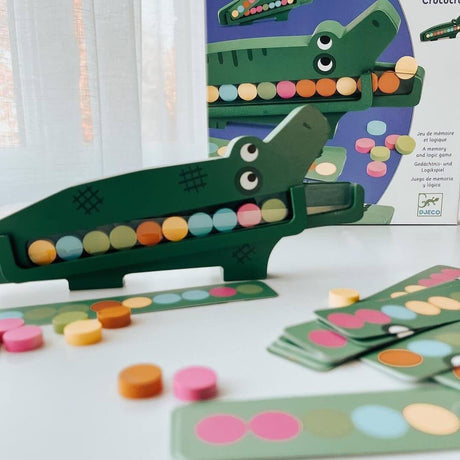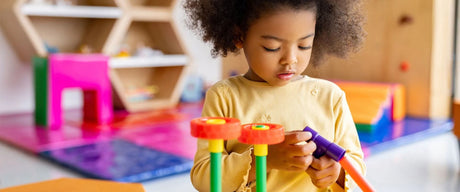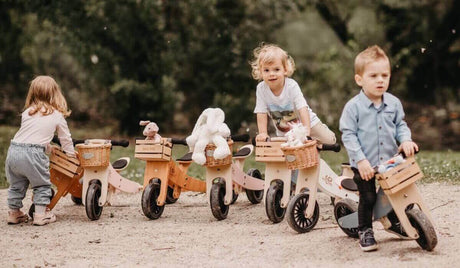Every year, manufacturers develop new educational games and toys aimed at children. Most of them feature intricately designed plastic parts. Some have sounds and whistles. Many were designed for a few specific purposes.
While these toys can play a role in your child's education, you can spend a lot of money, and still not receive an equal share in educational value. However, wooden toys often have much more to offer children than the latest fashionable educational toys of the day.
So why choose wooden toys ? Here are the advantages of offering educational wooden games to your child, from birth!
Wooden games are timeless
Wooden toys have been very fashionable for some time. In fact, they've been in style for decades, even centuries. Your grandparents and great-grandparents learned with wooden toys when they were young and your grandchildren and great-grandchildren can learn with wooden toys too.
While there are many new educational products available, sometimes it helps to stick with the tried and true. Even as companies reinvent the organization, color or design of their wooden games, they maintain the same classic spirit and offer the same educational benefits that children have reaped for generations.
Sustainable toys
Let's face it: kids are hard on their toys and other educational materials. You're probably missing some play pieces and at least one broken toy sitting somewhere in your house. From generation to generation, wooden toys are not only loved, but they often last from generation to generation.
Made from quality, sturdy wood, it's difficult to damage them beyond basic scratches. If your child gets them dirty, you can easily clean them so they're ready for the next learning activity.
If you are considering investing in wooden learning games for your children, you can be sure that they will last a long time and can be used with multiple children.
Games that grow with your child
When you invest in wooden toys, you are investing in a durable and versatile product to grow with your child. Toddlers and children can engage in simple, imaginative play and manipulation of wooden toys, but older children can begin to incorporate wooden toys into more complex imaginative scenarios, pairing them with discussions about geometry and physics and using them to solve problems.
As your child's skills and mental abilities grow, so do the uses of wooden games. Although many homeschooling products have suggested age ranges, the possibilities for using wooden toys are so versatile that they can be connected to a wide range of ages and skill levels .
Wooden toys encourage imagination
Wooden toys allow children to take control. Although some wooden toys take the form of vehicles , food , or common household items, they still encourage children to use their imagination to integrate them into learning and play.
Other educational wooden toys have basic shapes, such as sticks, blocks, arcs, triangles and circles. These basic shapes allow children to really explore their uses and find creative ways to use them in different areas.
For example, children can experiment with physics by building different structures with the wooden toys or learn about geometry by manipulating the toys to create their own geometric patterns.
These games incorporate real-world skills
As children engage in imaginative play, much of it will evolve into real-life scenarios. For example, children may have wooden toys in the form of food and common household items to use when playing a house or grocery store game.
Even if children only have basic shapes, they can begin to use wooden toys and use imagination to learn real-world skills.
For example, wooden sticks can represent currency when buying and selling other wooden items. The red circles can become strawberries for example.
Wooden toys distract less attention
With wooden toys, children make all the voices, alarms and other sound effects, rather than listening to the toy. This allows them to control what they do with the toys and keep a clear mind when thinking about different scenarios or solving problems.
While some children love toys with all the sounds and whistles, noises and electronic features can interrupt the child's thought process or limit the scope of their imagination by directing them to play in specific ways with the toy.
Safe toys
When your children will handle their toys, you should not worry too much about their safety because wooden toys are designed to be safe. Most wooden toys won't break easily, meaning children won't be exposed to sharp edges or small parts that have come loose from the toy.
Non-toxic toys for babies
The advantage of wooden toys is their organic, non-toxic and naturally antibacterial composition. Unlike plastic toys which, when broken, can leave sharp, jagged edges and small pieces easily swallowed by babies, posing a high risk of choking and injury. Additionally, wooden toys are more durable and recyclable.
Being made from natural materials, this allows little ones to handle them by chewing or sucking them. You don't have to worry about polluting your home with unknown chemicals or what your child might ingest.
Wooden toys are less noisy
Not only will wooden toys not pollute your home with chemicals, they will not pollute your home with noise. While this lack of noise keeps children from getting distracted, it also provides parents with the quiet they so often need during the day.
Children can't accidentally leave a wooden game running or listen to incessant beeps while playing. Instead, you can focus on the sound of your children's voices and laughter as they learn and interact with their toys. When your children go to sleep, the toys are asleep and quiet.
Ecological and environmentally friendly
Young parents these days are environmentally conscious. They are concerned not only about non-organic toxic substances contained in toys and everyday items, but also about their harmful effects on the environment.
Landfills and oceans are clogged with plastics that are non-biodegradable and harmful to living organisms, adding to already pressing environmental problems. Wood, on the other hand, is a sustainable, recyclable and biodegradable material.
Additionally, a recent study shows that an average of three months after Christmas, 41% of all plastic toys end up in landfill. Imagine the effect of all that plastic on the environment. Wooden toys, if they ever end up in a landfill, will not cause much damage, and over time they will decompose without leaving any harmful traces on land or in the ocean.
The educational qualities of wooden games
Wooden toys are manufactured in accordance with knowledge and best practices relating to child learning and development, based on principles developed by legendary child psychologists, scientists and educationalists such as Montessori, Steiner and Dewey.
Wooden toys are designed to help children from an early age learn shapes and colors, sizes, textures, as well as develop logical thinking , cause and effect relationships, organizational skills , problem solving and decision making, among others.
They make an excellent toy to give as a birth or birthday gift.





